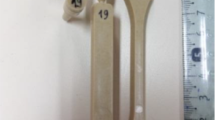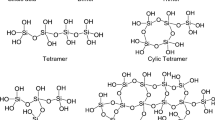Summary
Wood-mineral composites were made by introducing inorganic substances into wood using the water glass (sodium silicate)-boron compound system (double treatment). Composites were also prepared with boron compounds alone (single treatment), and biological resistances of the two types of composites were evaluated and compared.
After the leaching procedure, the composites using the water glass-boron compound system showed generally excellent termite resistances with the negligible weight losses of specimens and high mortalities of workers and soldiers. On the contrary, the single treatment and the double treatment using the reactants of non-boron compounds showed slight or little resistances against termite attacks, accounting for the high leachability of the inorganic substances formed in wood and/or low effectiveness of the chemicals.
Also, the water glass-boron compound system was found to enhance greatly the decay resistances if water-soluble inorganic substances were fully removed out from the specimens. The formation of insoluble inorganic substances in the water glass-boron compound system proved to contribute much to the enhancement of biological resistances.
Similar content being viewed by others
References
Dickinson DJ (1990) Remedial treatment: in-situ treatments and treatments of historic structures. Forest Products Research Society, USA, First International Conference on Wood Protection with Diffisible Preservatives: 87–90
Furuno T, Uehara T, Jodai S (1991) Combinations of wood and silicate I. Impregnation by water glass and applications of aluminum sulfate and calcium chloride as reactants. Mokuzai Gakkaishi 37(5): 462–472
Furuno T, Shimada K, Uehara T, Jodai S (1992a) Combinations of wood and silicate II. Wood-mineral composites using water glass and reactants of barium chloride, boric acid, and borax, and their properties. Mokuzai Gakkaishi 38(5): 448–457
Furuno T (1992b) Studies on combinations of wood and silicate and their properties. Proceedings of the international symposium on chemical modification of lignocellulosics, November 1992, Rotorua, New Zealand (FRI Bulletin No. 176): 190–196
Furuno T, Uehara T, Jodai S (1993) Combinations of wood and silicate III. Some properties of wood mineral composites using the water glass-boron compound system. Mokuzai Gakkaishi 39(5): 561–570
Takahashi A (1987) Silicic plant and lime plant. p. 62, Tokyo: Nosangyoson-bunkakyokai
Tucker ME (1981) Sedimentary pentrology — An introduction. p. 216, Oxford: Blackwell Sci. Pub.
Williams LH (1990) Potential benefits of diffusible preservatives for wood protection: an analysis with emphasis on building protection. Forest Products Research Society, USA, First International Conference on Wood Protection with Diffisible Preservatives: 29–34
Author information
Authors and Affiliations
Additional information
The authors express their appreciation to Mr. Ryuji Tadokoro and Mr. Tsuyoshi Kuriu for their assistance in sample preparation and biological testing, respectively.
Rights and permissions
About this article
Cite this article
Furuno, T., Imamura, Y. Combinations of wood and silicate Part 6. Biological resistances of wood-mineral composites using water glass-boron compound system. Wood Sci.Technol. 32, 161–170 (1998). https://doi.org/10.1007/BF00704839
Received:
Issue Date:
DOI: https://doi.org/10.1007/BF00704839




